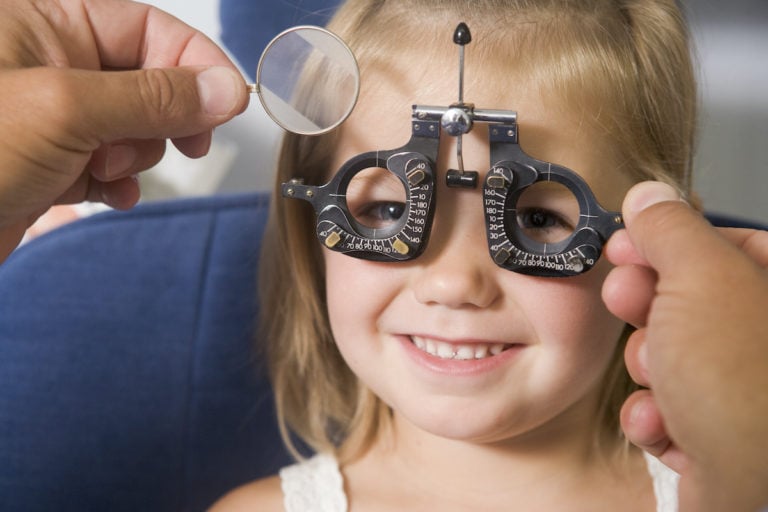Signs of Glaucoma to look out for in kids and adults
Glaucoma is the leading cause of irreversible blindness worldwide. It is estimated that over 300,000 Australians have glaucoma, but 50% are undiagnosed. There’s no cure for glaucoma, but early treatment can often stop the damage and protect one’s vision.
Glaucoma is a condition of the eye where the optic nerve is damaged due to inadequate blood supply. The most common cause is raised pressure inside the eye (intraocular pressure) of the aqueous humour.
Jacqueline Gattegno, a Smart Vision Optometrist at Eyes InDesign Bondi, explains the fundamental signs of glaucoma to look out for.
“There are two main types of glaucoma, open-angle glaucoma and closed-angle glaucoma. With open-angle glaucoma, eye pressure builds gradually over time, but with closed-angle glaucoma, it’s far more sudden, requiring urgent treatment in most cases,” Jacquie says.
Peripheral vision loss is a common symptom of glaucoma. It does not affect the central vision, which is often caused by a condition known as macula degeneration, and is usually only experienced during the later stages of the disease.
The earlier the damage is detected, the better the prognosis. The damage to the optic nerve can lead to progressive and irreversible vision loss. “Most early changes cannot easily be noticed in normal life, simply because people are used to how they see out of their eyes, and, unless they can compare their vision to a healthy vision range, they would be none the wiser. That is why regular eye examinations are important in order to detect then treat glaucoma,” Jacquie says.
Some people are more susceptible to glaucoma than others. “A family history of high myopia and high blood pressure levels are known to increase a person’s chance of developing glaucoma,” says Jacquie. “Ageing and certain medication usage can also increase the risk profile of glaucoma,” she adds.
Annual eye examinations should be a priority for everyone, as it is the best way to detect glaucoma quickly. “Smart Vision Optometry uses state-of-the-art technology to diagnose and monitor eye conditions such as glaucoma,” says Jacquie. “Fortunately, early treatment for this condition can help stop its progress,” she adds.
Glaucoma can happen at any age. When glaucoma occurs in babies, children, and teenagers, it is called paediatric glaucoma. There are different classifications of the condition, and each type has a different age when it appears.
Congenital glaucoma occurs when a baby is born. It can also be caused by the development of an infantile eye. Congenital glaucoma occurs in babies at birth. Infantile glaucoma is usually diagnosed in babies who are less than one month old. Juvenile glaucoma normally refers to the condition in children under the age of three.
Although rare, congenital, infantile, or juvenile glaucoma are still considered uncommon. The Glaucoma Foundation states that about one in 10,000 births results in congenital glaucoma. Most babies with congenital or infantile glaucoma have vision that’s good enough to see clearly. However, if they are not treated correctly, their vision maybe lost over time.
Symptoms of paediatric glaucoma include, cloudy eye, dull appearing iris (coloured part of the eye), sensitivity to light, and excessive tearing. Although these symptoms may not be noticed at first, they can be detected through an eye examination. In most cases, they can be triggered by factors that are not yet apparent.
“Intraocular pressure reduction is one of the goals of treatment for glaucoma. By lowering the pressure gradually, it can help preserve vision,” says Jacquie.
A comprehensive vision skills assessment takes about one hour and is a key examination for the detection of glaucoma.
Smart Vision Optometry clinics are located in Sydney. Book a Smart Vision Comprehensive Vision Skills Assessment or Advanced Eye Health Test for any child or adult by calling the Mosman clinic (02) 9969 1600 or the Bondi clinic (02) 9365 5047, alternatively book an appointment online.







